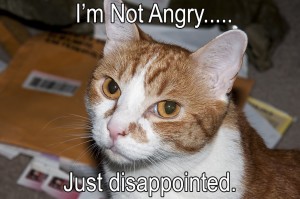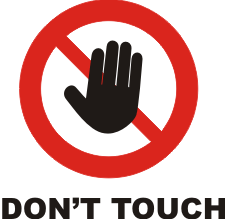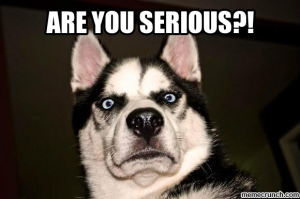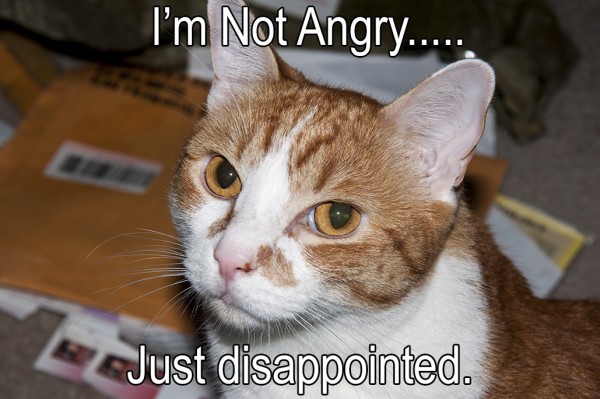 As a new or aspiring model, there’s a long, long list of things you may look back on someday and say to yourself “If only I knew then what I know now…” Surely you’ve heard about the high rate of rejection and the thick skin required to venture into the daunting waters of runways, photo shoots for magazines and other contexts in which you hope to find yourself, but little-known are the caveats of etiquette that can make or break your chances no matter how confident your personality nor how resilient your spirit.
As a new or aspiring model, there’s a long, long list of things you may look back on someday and say to yourself “If only I knew then what I know now…” Surely you’ve heard about the high rate of rejection and the thick skin required to venture into the daunting waters of runways, photo shoots for magazines and other contexts in which you hope to find yourself, but little-known are the caveats of etiquette that can make or break your chances no matter how confident your personality nor how resilient your spirit.
1. Take direction
 This applies to first-timers as much as it does for seasoned professionals. Understand that the people who put together that day’s production put a lot of time, creative planning and resources into their vision of the hoped-for outcome. If you think you know enough to take the reins and direct yourself, think again. Even industry veterans can’t assume what the Creative Director, the client and the photographer are trying to capture, so by dismissing direction you’re sabotaging, at the very least, your part in it. If it’s a headshot shoot, taking it upon yourself to lie down on the set is creative suicide. You may think it’s sexy, and you may even think it’s ok because the Creative Director just turned away and let you roll with it. The truth is, the CD just realized you’re not a team player and turned his/her back on your part of the picture. The result is that you’ll have very few images to be chosen from at the end of the day, as your self-assigned creative direction had nothing to do with the vision of everyone who put the production together.
This applies to first-timers as much as it does for seasoned professionals. Understand that the people who put together that day’s production put a lot of time, creative planning and resources into their vision of the hoped-for outcome. If you think you know enough to take the reins and direct yourself, think again. Even industry veterans can’t assume what the Creative Director, the client and the photographer are trying to capture, so by dismissing direction you’re sabotaging, at the very least, your part in it. If it’s a headshot shoot, taking it upon yourself to lie down on the set is creative suicide. You may think it’s sexy, and you may even think it’s ok because the Creative Director just turned away and let you roll with it. The truth is, the CD just realized you’re not a team player and turned his/her back on your part of the picture. The result is that you’ll have very few images to be chosen from at the end of the day, as your self-assigned creative direction had nothing to do with the vision of everyone who put the production together.
2. Don’t touch people
 On a photo shoot, lots of people will be touching you – from the MUA who does your hair and makeup to the wardrobe people who make sure you’re wearing the perfect look for the picture. People will adjust you and your look throughout the process; that’s part of the modeling world. That said, it’s a one-way street. Even if you’re a world-renowned, licensed massage therapist, don’t take it upon yourself to dispense unsolicited physical therapy to others on set. Some “extreme” photo shoots may even entail having a medical professional on standby – but it isn’t you. In the best case scenario, you’ll be politely asked to stop. Worst case scenario? You could be liable for hurting someone if you don’t really know what you’re doing and the medical circumstances of the person you just took it upon yourself to “treat.” You could be accused of assault if you harm someone with your good intentions, but even if that never happens you’ll never be used again by that agency, photographer or client. Remember that your job is to be a model – nothing else.
On a photo shoot, lots of people will be touching you – from the MUA who does your hair and makeup to the wardrobe people who make sure you’re wearing the perfect look for the picture. People will adjust you and your look throughout the process; that’s part of the modeling world. That said, it’s a one-way street. Even if you’re a world-renowned, licensed massage therapist, don’t take it upon yourself to dispense unsolicited physical therapy to others on set. Some “extreme” photo shoots may even entail having a medical professional on standby – but it isn’t you. In the best case scenario, you’ll be politely asked to stop. Worst case scenario? You could be liable for hurting someone if you don’t really know what you’re doing and the medical circumstances of the person you just took it upon yourself to “treat.” You could be accused of assault if you harm someone with your good intentions, but even if that never happens you’ll never be used again by that agency, photographer or client. Remember that your job is to be a model – nothing else.
3. Don’t question or express doubt
 Makeup artists aren’t cheap; neither are any other components of professional photography, marketing campaigns or even the clothing or props used in the shoot. Again referring to rule #1, the people present took a lot of time and effort to put together a production to manifest the vision for whatever may be the end result of the day’s process. If you think your makeup wasn’t done correctly, your next most appropriate step is to enroll in a good cosmetology program and become someone hired to do the makeup on set – not to question the makeup that was just put on you. Never ask the photographer to step behind the camera to see the pictures taken of you thus far, unless you are explicitly invited to do so… and never, ever say “I look too powdery” or “I don’t think my lips are the right color for me.” Being a model, by definition, means being a subject used to bring to life someone else’s vision – not yours, and your curiosity of how your pictures look will have to wait until the final product is released.
Makeup artists aren’t cheap; neither are any other components of professional photography, marketing campaigns or even the clothing or props used in the shoot. Again referring to rule #1, the people present took a lot of time and effort to put together a production to manifest the vision for whatever may be the end result of the day’s process. If you think your makeup wasn’t done correctly, your next most appropriate step is to enroll in a good cosmetology program and become someone hired to do the makeup on set – not to question the makeup that was just put on you. Never ask the photographer to step behind the camera to see the pictures taken of you thus far, unless you are explicitly invited to do so… and never, ever say “I look too powdery” or “I don’t think my lips are the right color for me.” Being a model, by definition, means being a subject used to bring to life someone else’s vision – not yours, and your curiosity of how your pictures look will have to wait until the final product is released.
4. Let the leaders lead – and it begins with walking through the door, if it’s locked.
 Just as if you were invited to someone’s home for a social gathering, it’s inappropriate to let yourself in until your hosts are there to do so. If you arrive at a studio space being used by the client or photographer(s) who invited you to be a part of that day, there are insurance and liability concerns that put everyone at risk if you take it upon yourself to go on the premises until those who are in charge bring you in. From an etiquette standpoint, it’s simply rude; just as you wouldn’t walk into someone’s living room until they were home. Homeowners have insurance, and similarly photographers have business insurance. Taking it upon yourself to take the lead puts everyone – including yourself – at risk. It’s unlikely that any host will invite you back if they know that you pose such a risk, so be patient and wait for the party to begin before you come in.
Just as if you were invited to someone’s home for a social gathering, it’s inappropriate to let yourself in until your hosts are there to do so. If you arrive at a studio space being used by the client or photographer(s) who invited you to be a part of that day, there are insurance and liability concerns that put everyone at risk if you take it upon yourself to go on the premises until those who are in charge bring you in. From an etiquette standpoint, it’s simply rude; just as you wouldn’t walk into someone’s living room until they were home. Homeowners have insurance, and similarly photographers have business insurance. Taking it upon yourself to take the lead puts everyone – including yourself – at risk. It’s unlikely that any host will invite you back if they know that you pose such a risk, so be patient and wait for the party to begin before you come in.
5. Model-Photographer confidentiality
 It may not be a doctor’s or lawyer’s office, but there are laws regarding creative intellectual property, procedure and even equipment. What happens on set stays on set. If your photographer or client learns that you’ve divulged any type of information from that day’s production to any outside party, you could be liable for copyright infringement, intellectual property theft and a number of other legal violations you’re probably not aware of as a model. Do your best to be a team player and you could have a good, long-lasting relationship with your hosts; but telling someone else about ideas discussed for future shoots, the creative process used that day or anything else from the production could land you in legal trouble. You may find yourself the surprised recipient of a cease and desist notice, which extends to everyone to whom you gave information about the production or photo shoot. At the very least, you’ve just cost yourself what would have been a standing invitation to future projects.
It may not be a doctor’s or lawyer’s office, but there are laws regarding creative intellectual property, procedure and even equipment. What happens on set stays on set. If your photographer or client learns that you’ve divulged any type of information from that day’s production to any outside party, you could be liable for copyright infringement, intellectual property theft and a number of other legal violations you’re probably not aware of as a model. Do your best to be a team player and you could have a good, long-lasting relationship with your hosts; but telling someone else about ideas discussed for future shoots, the creative process used that day or anything else from the production could land you in legal trouble. You may find yourself the surprised recipient of a cease and desist notice, which extends to everyone to whom you gave information about the production or photo shoot. At the very least, you’ve just cost yourself what would have been a standing invitation to future projects.
6. Humility means silence
 No one wants to work with a model who can’t express herself or have a good personality on set, but keep it focused and within limits; because by the same token, no one showed up that day hoping to hear your life story. Don’t presume that the MUA and the model being prepped in his or her chair came to the studio that day chomping at the bit to hear the latest drama from your day job, your personal life or anything else of the sort. Be mindful of what’s happening aside from the main camera setup – sometimes the hair & makeup process is video recorded for a catchy time-lapse video to be incorporated into that day’s project, so don’t be so wrapped up in yourself that you don’t realize you’ve been standing or sitting in view of the video the entire time until your turn to be in the chair. The MUA needs to focus, and the model in his/her chair could care less. Imagine what the people you’re talking about would think if they knew you were doing a drama dump of their most intimate details instead of watching what’s happening in front of the camera, not to mention what you’re not learning by ignoring it. Worst of all, you may be so caught up in being the center of attention that you forgot you’re being recorded as you violate someone else’s confidentiality rights as you gab away. Especially if you’re not so good at rule #1, your “down time” between your turn(s) being in front of the camera are better spent learning from the model(s) going before you, so don’t be presumptuous by thinking that everyone in the production wants to hear everything about your personal life. And if you did ruin the time lapse video of the MUA magic, you can be sure you won’t be invited back for the next project.
No one wants to work with a model who can’t express herself or have a good personality on set, but keep it focused and within limits; because by the same token, no one showed up that day hoping to hear your life story. Don’t presume that the MUA and the model being prepped in his or her chair came to the studio that day chomping at the bit to hear the latest drama from your day job, your personal life or anything else of the sort. Be mindful of what’s happening aside from the main camera setup – sometimes the hair & makeup process is video recorded for a catchy time-lapse video to be incorporated into that day’s project, so don’t be so wrapped up in yourself that you don’t realize you’ve been standing or sitting in view of the video the entire time until your turn to be in the chair. The MUA needs to focus, and the model in his/her chair could care less. Imagine what the people you’re talking about would think if they knew you were doing a drama dump of their most intimate details instead of watching what’s happening in front of the camera, not to mention what you’re not learning by ignoring it. Worst of all, you may be so caught up in being the center of attention that you forgot you’re being recorded as you violate someone else’s confidentiality rights as you gab away. Especially if you’re not so good at rule #1, your “down time” between your turn(s) being in front of the camera are better spent learning from the model(s) going before you, so don’t be presumptuous by thinking that everyone in the production wants to hear everything about your personal life. And if you did ruin the time lapse video of the MUA magic, you can be sure you won’t be invited back for the next project.
This blog may sound daunting – even harsh – but these 6 points could be the saving grace of your aspirations in fashion and modeling. You’ll be taught to walk a certain way in modeling school, if you attended, but unfortunately etiquette on set isn’t in the curriculum. Take this information as a helpful “elective” that could further your journey in the modeling world, and the benefits will go far beyond putting one foot gracefully in front of the other. A model’s walk or look can be (often) easier to refine than the caveats of etiquette, the rarely spoken rules that either earn you an invitation to the next project or an invitation to leave a photo shoot, audition, or go-see. Finally, remember that the photography and fashion industries are a community just as much as it is an artistic profession. If you show poor etiquette at one production, don’t be surprised if word about your behavior travels to other photographers and creative directors. If you think breaking the rules in one production have no bearing on your chances at the next, you may find yourself disappointingly surprised.

